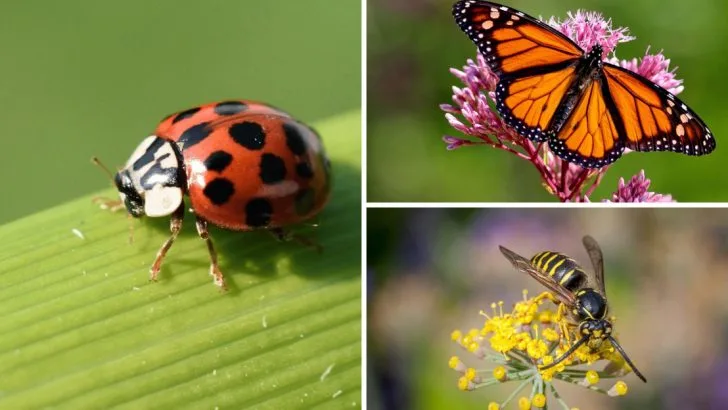Not all bugs are bad news. In fact, some of them are doing a lot of behind-the-scenes work to keep your garden balanced and healthy. The trick is figuring out who’s helping and who’s making a mess of your plants. It’s easy to assume that anything crawling or chewing is a problem, but that’s not always the case.
Knowing the difference can save you from unnecessary spraying and help you support the good guys—the ones eating pests, pollinating flowers, or breaking down debris. On the flip side, there are definitely some insects you’ll want to keep in check before they get too comfortable. Here’s a look at seven harmful insects worth removing and seven helpful ones that actually deserve a spot in your garden.
Aphids

Aphids are small, soft-bodied insects that can be green, black, or white. These tiny pests feed on plant sap, causing leaves to curl and distort. In severe infestations, aphids can stunt plant growth and spread plant diseases.
Their presence often attracts ants, which protect them to harvest their sugary excretions. A strong stream of water or insecticidal soap can reduce aphid populations.
Since they reproduce rapidly, frequent monitoring of your plants is essential. Remember, a few aphids might not be problematic, but an infestation requires immediate action to protect your garden’s health.
Japanese Beetles
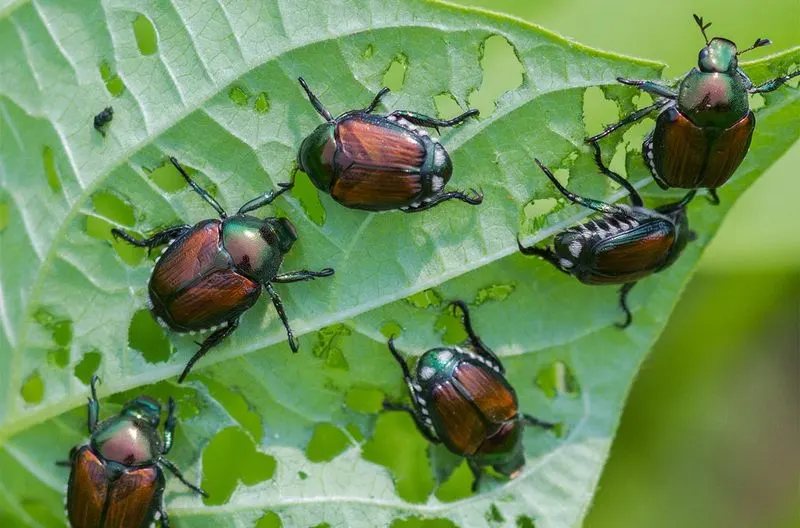
Japanese beetles are notorious for their love of roses and numerous other plants. With iridescent green bodies and coppery wings, they are quite striking but highly destructive. They chew on leaves, leaving behind a lace-like skeleton.
Handpicking them off plants can be effective, especially in the early morning when they are less active. Consider using traps or neem oil for larger infestations.
These beetles can quickly decimate a garden if not controlled. Prudent management ensures your plants continue to thrive without the fear of beetle-induced damage.
Slugs and Snails
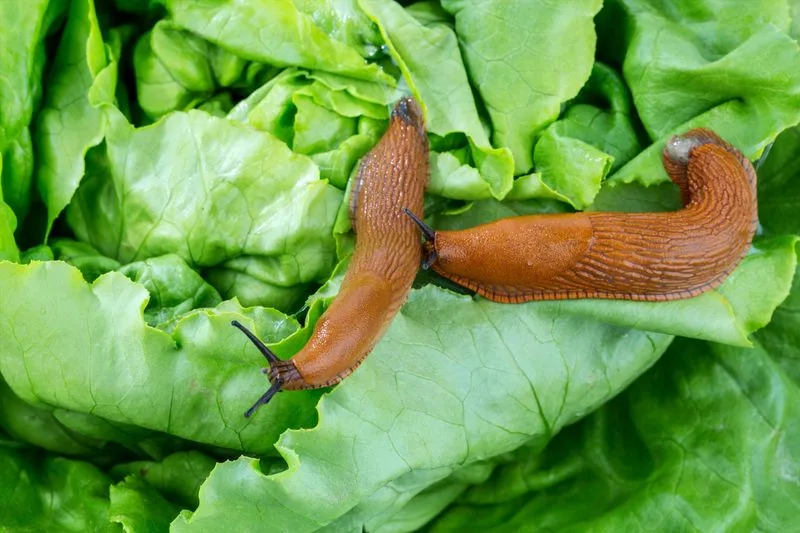
Slugs and snails may seem slow and harmless, but they can devastate a garden overnight. They feast on tender plant leaves, leaving irregular holes and slime trails as evidence of their activity.
Utilizing barriers like copper tape or introducing natural predators, such as ducks, can help manage their numbers.
For those preferring non-lethal methods, setting beer traps or evening handpicking are options. While they are part of the garden ecosystem, controlling their population is vital to prevent extensive plant damage.
Caterpillars
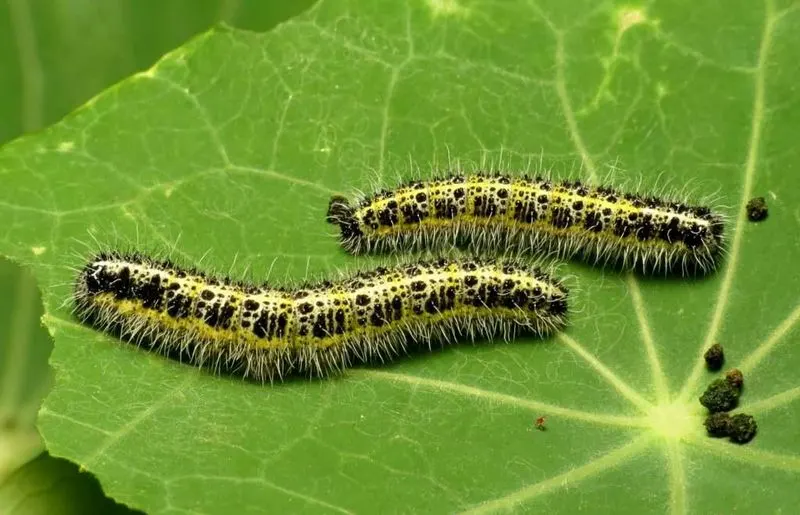
Caterpillars, though future butterflies or moths, can be voracious eaters that strip plants bare. They munch through leaves, sometimes causing significant damage to both flowers and vegetables.
While some caterpillars are beneficial, controlling pest species like cabbage loopers or tomato hornworms is crucial. Consider using Bt (Bacillus thuringiensis), a natural bacteria that targets caterpillars without harming other wildlife.
Regularly inspect your plants, and handpick when necessary, to maintain a healthy balance. Encouraging birds can also help keep caterpillar populations under control.
Whiteflies
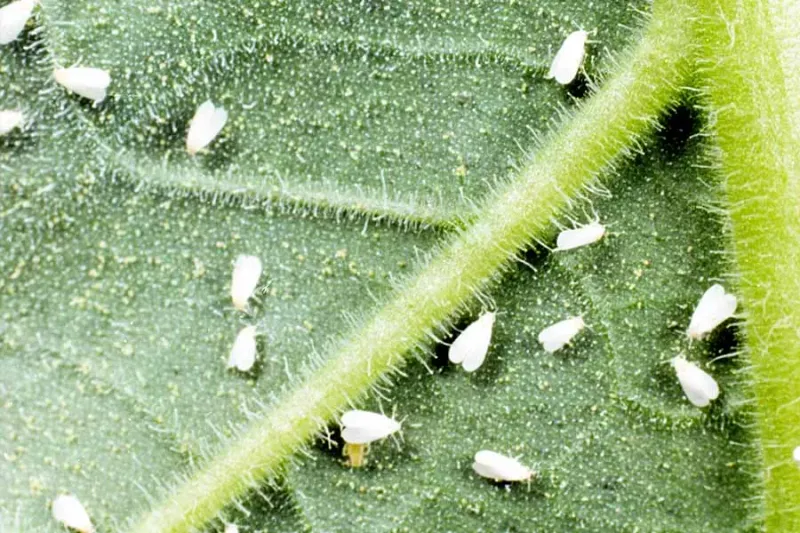
Whiteflies are small, winged insects that can form dense clouds when disturbed. They feed on plant sap, weakening the host and potentially transmitting viral diseases.
In a greenhouse or garden, these pests can multiply rapidly. Yellow sticky traps and insecticidal soaps are effective control measures. Maintaining plant health and encouraging natural predators like ladybugs can also reduce their numbers.
Regularly checking the undersides of leaves helps identify infestations early. By managing whiteflies, you ensure your plants remain vibrant and productive throughout the growing season.
Mealybugs
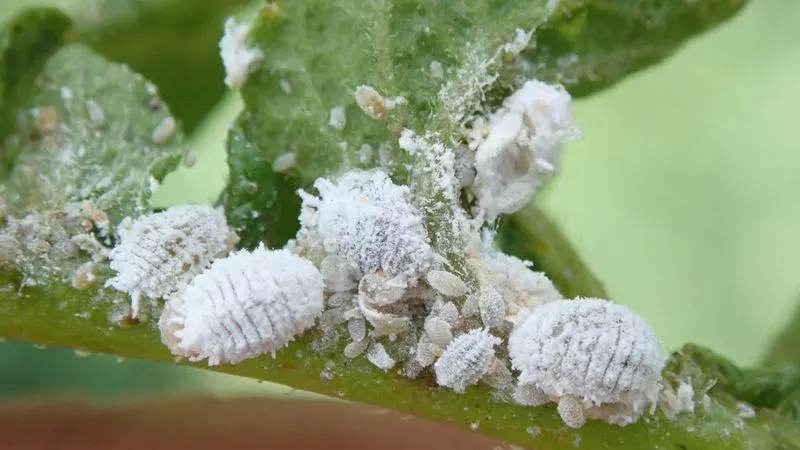
Mealybugs are soft-bodied insects covered with a white, waxy coating, making them look like small cotton balls. They feed on plant juices, causing stunted growth and sooty mold from their honeydew secretions.
Indoor plants often fall victim, but they can also infest outdoor gardens. Insecticidal soap or neem oil can manage outbreaks, and beneficial insects like ladybugs are natural predators.
Manually removing mealybugs with a Q-tip soaked in alcohol is an effective method for small infestations. Keeping your plants healthy and clean can prevent these pests from establishing.
Spider Mites
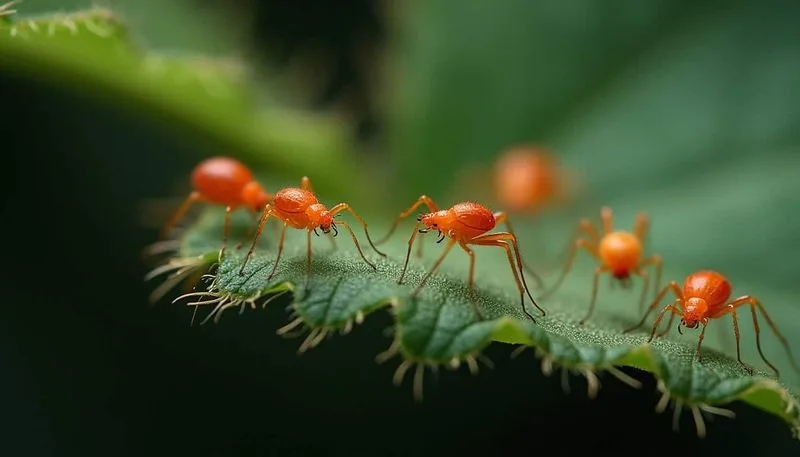
Spider mites are tiny arachnids that thrive in hot, dry conditions, often going unnoticed until plant damage is evident. They feed on plant cells, leading to yellowed leaves and potential plant death.
If you see fine webbing, it’s a sign of infestation. Increasing humidity and using miticides can help control their spread.
Introducing predatory mites is a natural control method. Regular watering and misting can deter them, as they prefer dry environments. Vigilance is key to preventing spider mites from taking over your garden space.
Ladybugs
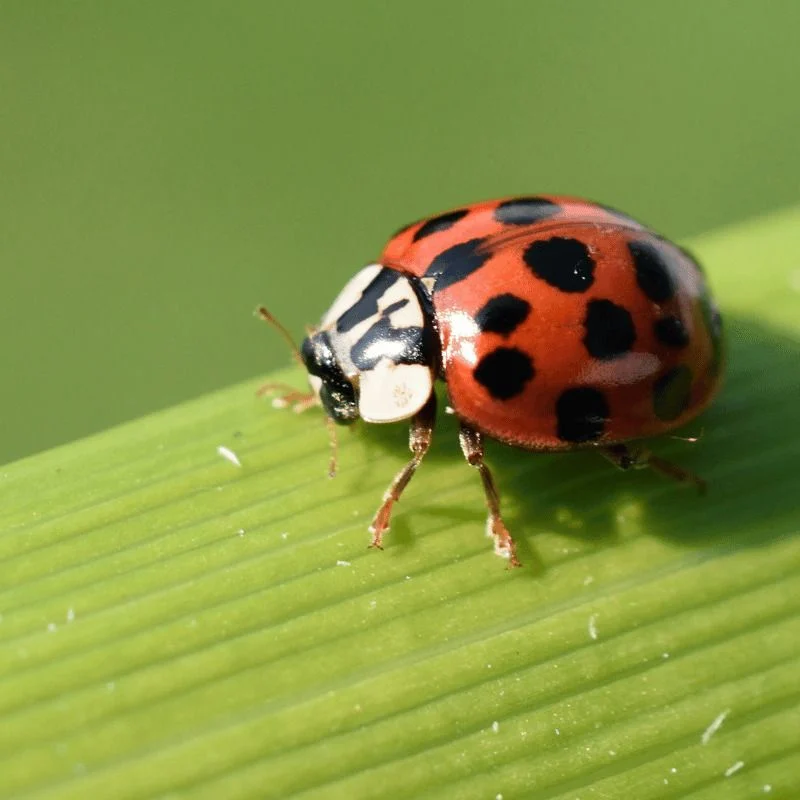
Ladybugs are a gardener’s friend, known for their appetite for aphids and other pests. These small, dome-shaped beetles are a welcome sight, with their cheerful red and black-spotted appearance.
Encouraging ladybugs in the garden is beneficial, as they help keep pest populations in check naturally. Providing flowering plants and avoiding chemical pesticides can attract them.
Did you know? A single ladybug can eat up to 5,000 aphids in its lifetime! By fostering an environment where ladybugs thrive, your garden can remain healthy and vibrant.
Bees
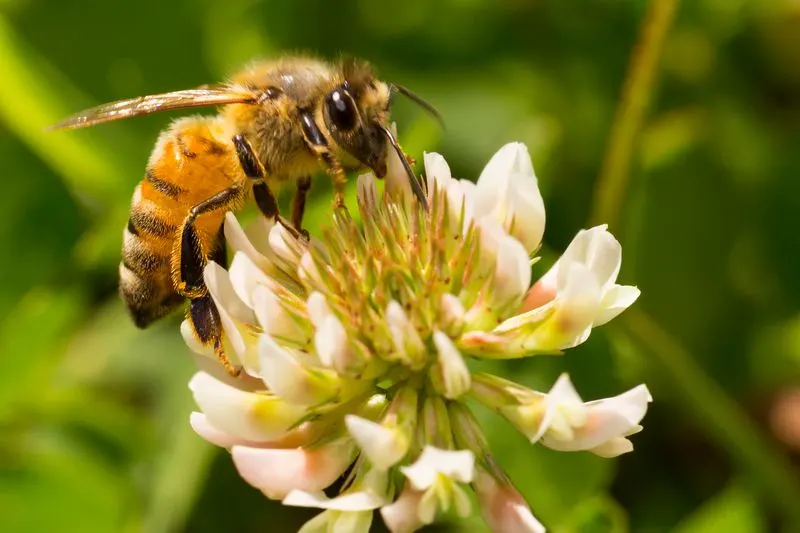
Bees are essential pollinators, playing a critical role in the production of fruits and vegetables. With their fuzzy bodies and diligent work ethic, bees transfer pollen as they move from flower to flower.
Creating a bee-friendly garden with a variety of blooming plants ensures these insects can thrive. Avoiding pesticides and providing water sources further supports their populations.
Bees are not just hardworking; they are vital to the ecosystem. A garden buzzing with bees is likely to be thriving with life and produce.
Butterflies
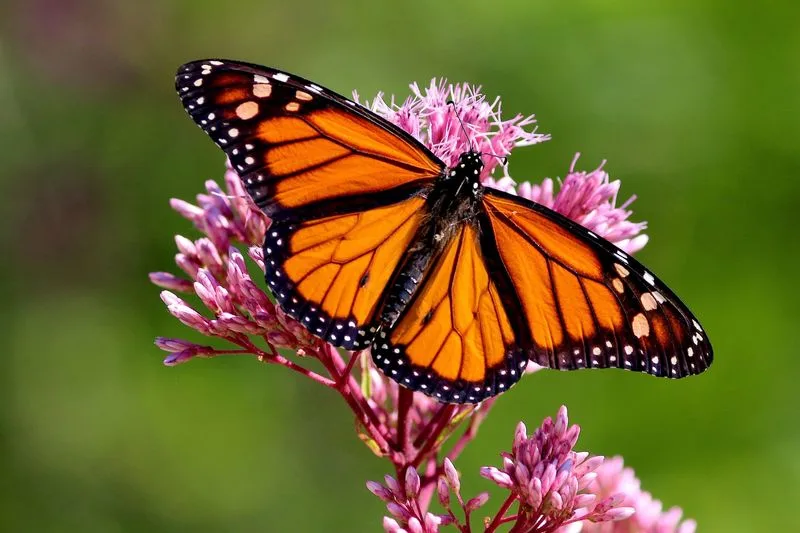
Butterflies are more than just beautiful garden visitors; they are important pollinators. Their presence indicates a healthy garden ecosystem. With colorful wings and graceful flight, butterflies bring joy and benefits.
Planting butterfly-friendly species like milkweed and lavender can attract them. Ensuring access to sunny spots and water features enhances their stay.
Did you know? Monarch butterflies migrate thousands of miles from North America to central Mexico. Encouraging these delicate creatures enriches your garden with beauty and biodiversity.
Lacewings
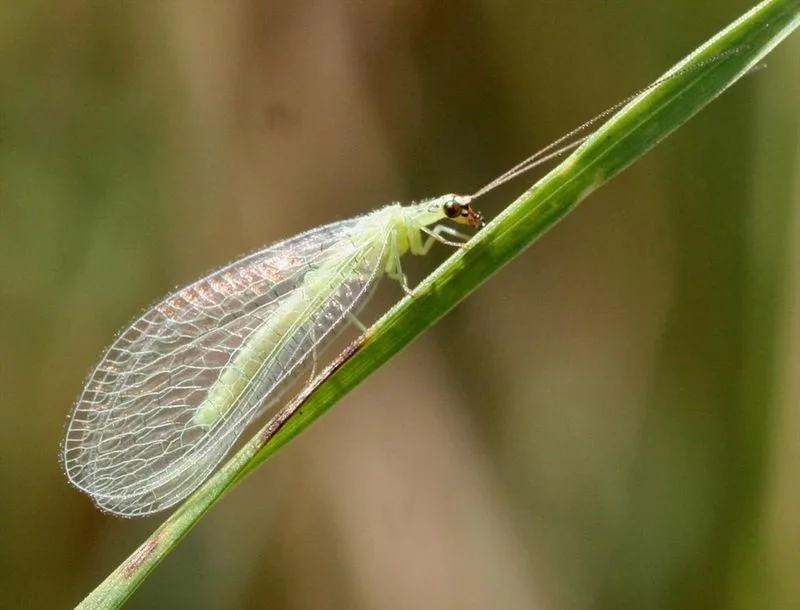
Lacewings, with their delicate green bodies and lacy wings, are formidable predators of garden pests. They consume aphids, caterpillars, and mites, offering natural pest control solutions.
To attract lacewings, grow plants like dill and cosmos, which provide them sustenance and shelter. Avoiding insecticides ensures these beneficial insects can thrive.
Their presence signifies a balanced garden ecosystem. By fostering lacewings, you enhance your garden’s resilience against harmful pest invasions.
Praying Mantises

Praying mantises are captivating predators with their elongated bodies and folding forearms. They feed on a variety of garden pests, from beetles to grasshoppers.
These solitary hunters are beneficial for a balanced garden ecosystem. Providing them a habitat with tall grasses and shrubs encourages their presence.
Fun fact: Praying mantises have excellent eyesight and can turn their heads 180 degrees! By welcoming these fascinating creatures, you support a healthy garden environment.
Ground Beetles
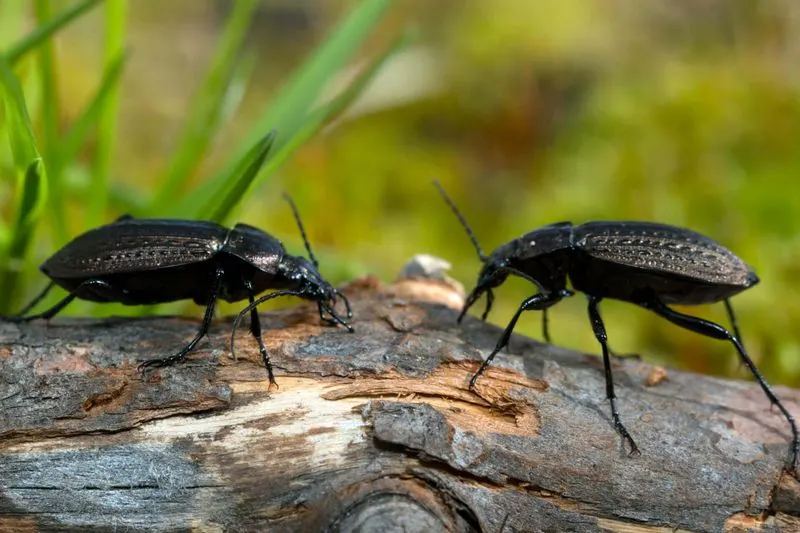
Ground beetles are beneficial predators that patrol the soil, hunting for slugs, caterpillars, and cutworms. Their shiny black bodies and quick movements make them efficient pest controllers.
To support ground beetles, maintain a mulch layer and minimize soil disturbance. They thrive in organic gardens where pesticide use is limited.
Ground beetles work primarily at night, providing unseen but invaluable service to your garden. By fostering their habitat, you enhance natural pest management and soil health.
Hoverflies
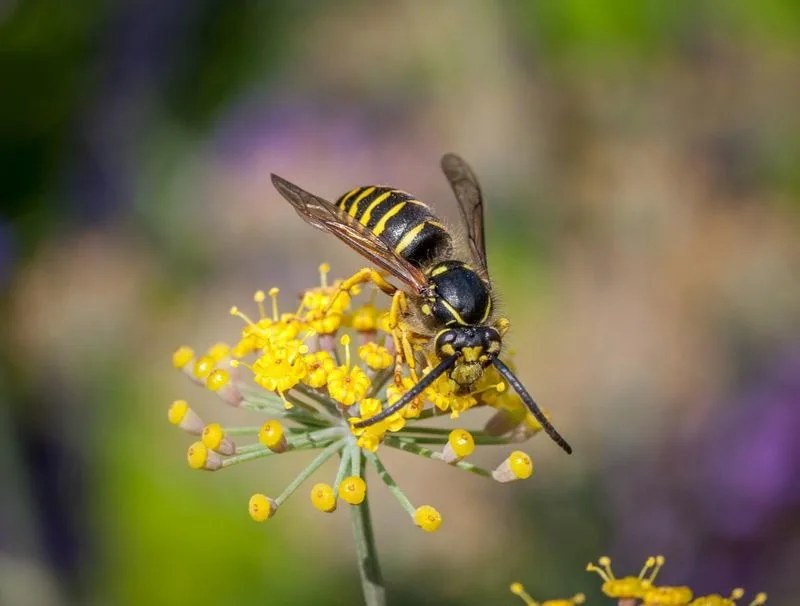
Hoverflies, with their bee-like appearance, are excellent pollinators and aphid predators. Their hovering flight and bright markings make them fascinating to watch.
Growing a variety of flowering plants can attract hoverflies to your garden. These insects are harmless and do not sting, making them ideal garden visitors.
Did you know? Hoverfly larvae can consume hundreds of aphids during their development. By supporting hoverflies, you contribute to a vibrant and resilient garden ecosystem.

